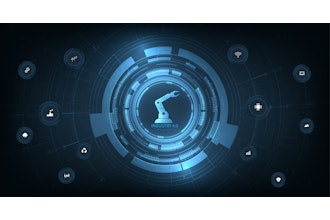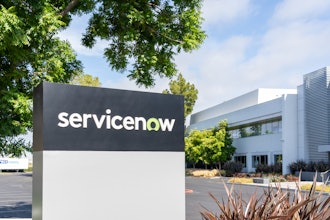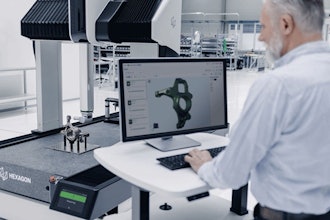In the age of big data, every industry is touched by digital processes and, therefore, has a trail of electronic data associated with it. From employment records to patents to plant communications and more, the manufacturing industry is no exception. In other words, no industry is safe from potentially having to produce data as legal evidence in the case of investigation or litigation.
Norton Rose Fulbright’s 2017 annual survey of hundreds of corporate counsel found that 48 percent of litigation dealt with labor and employment matters, and 12 percent dealt with product liability — two issues that are commonly litigated in the manufacturing industry. And there’s no doubt that electronic discovery (eDiscovery) — the process of collecting, filtering, reviewing and producing data — played a role in those cases.
Even though eDiscovery is common place in litigation today, it is all too often done in a reactive way — with the result being that everyone has to suddenly drop what they are doing and jump into action when the litigation alarm bell sounds. And that's compounded in manufacturing because widespread production processes can cause particular difficulty for IT departments when it comes to collecting and processing relevant data for litigation. What's more, when eDiscovery is treated as a reactionary process, it leads to more chaos, business disruption and increased risk. And while it's never easy, it's understandable to some degree why so many companies put up with the chaos — no one wants to take on additional tasks or spend un-budgeted money on something if it doesn’t need to be done.
The good news is that it doesn't have to be that way, especially with today's modern technologies, workflows and non-invasive processes. With a little — usually inexpensive — planning and decisions, companies can avoid those headaches and minimize their risk, all while reducing interruptions and costs. In short, it's finally possible to turn the chaos, expense and disruption of yesterday's eDiscovery nightmares into nothing more than a routine, non-invasive simple business process.
Here are three important steps to make eDiscovery a standard business process:
No. 1 - Create an eDiscovery plan
The best way to handle eDiscovery is to have a plan already in place. This detailed guide should be specific to your organization, and it should integrate easily with your other business processes.
Designate an eDiscovery manager and define who your eDiscovery team will be. Then create an agreed-upon set of protocols and best practices for each step of the process. Define how data will be stored, how legal holds will be managed, who will oversee data collections and more. It can be helpful to come up with checklists covering topics ranging from the first matter kick-off call to final document production protocols.
The planning process should also include deciding what platforms will be used throughout the process. Using too many platforms can become confusing and complicate the eDiscovery process as data is moved in and out of multiple platforms. That can also add unnecessary risk. The fewer platforms the company can find to encompass all the necessary steps, the more seamless the process will be.
Once you have made these decisions and instructions ahead of time, you will end up with an easy-to-use reference that all parties — including IT, inside counsel, outside counsel and others — can rely on for direction throughout an eDiscovery project. That will ensure that everyone is in alignment, your data remains secure and your process is defensible.
No. 2 - Determine how to handle document review
The review process can be the most expensive part of eDiscovery, so it’s important to have some decisions made ahead of time. What steps of the review process will your law firm handle? Will it save you money to use a review attorney team for the first round of review? Can you have the same review team for every legal matter? Does it make sense to use technology assisted review to find relevant documents? What technologies should you use to easily analyze and group documents? What does the quality control process look like to ensure privileged and confidential documents are not produced?
Your answers may not be the same for every project, but it’s important to outline basic parameters and thresholds for when to take what action. For example, technology assisted review doesn’t work as well on some data, like spreadsheets, as it does for others. When you determine ahead of time what platforms and people to employ at what times, your review will be more effective and efficient.
No. 3 - Re-use existing work
Many companies start the eDiscovery process from ground zero for every new legal matter. That means that if a new case or investigation comes up, the IT team will collect data again, even if it’s from custodians they’ve collected previously, and the review team will look over documents that may have been reviewed for a previous case, etc. That is both unnecessary and draining.
Instead, create a data repository that will hold all work product from any previous matters. That will save time and money from any duplicate data collections and it will mitigate the risk of producing any documents that may have been marked as privileged in an earlier case. Plus, why review documents again if it’s already been done? Recycling work product can help to maintain a standard across cases.
The best part is that a repository like this doesn’t have to add undue cost. Take the time to investigate the options and determine what platform will work best for you.
Additionally, because you will have data from multiple people and departments in one place, that information can be mined for further insight on the business. Known as business intelligence, companies can use the patterns and trends in the data to make targeted changes to business practices that can reconcile weaknesses, take advantage of strengths and increase efficiency in business processes overall.
As the manufacturing industry deals with rising litigation, IT professionals and others in the industry need to be aware of how they are managing their company’s data in preparation for such needs. It may also be helpful to bring in a third party to provide additional guidance in managing data, establishing processes and ensuring data security and overall process defensibility.
Once you have a standardized eDiscovery business process in place, your legal spending will decrease, your employees and teams will save remarkable time and effort and your company will be set up for success, ready to handle litigation needs correctly and effectively every time.
Brian Schrader, Esq., is President & CEO of BIA.























